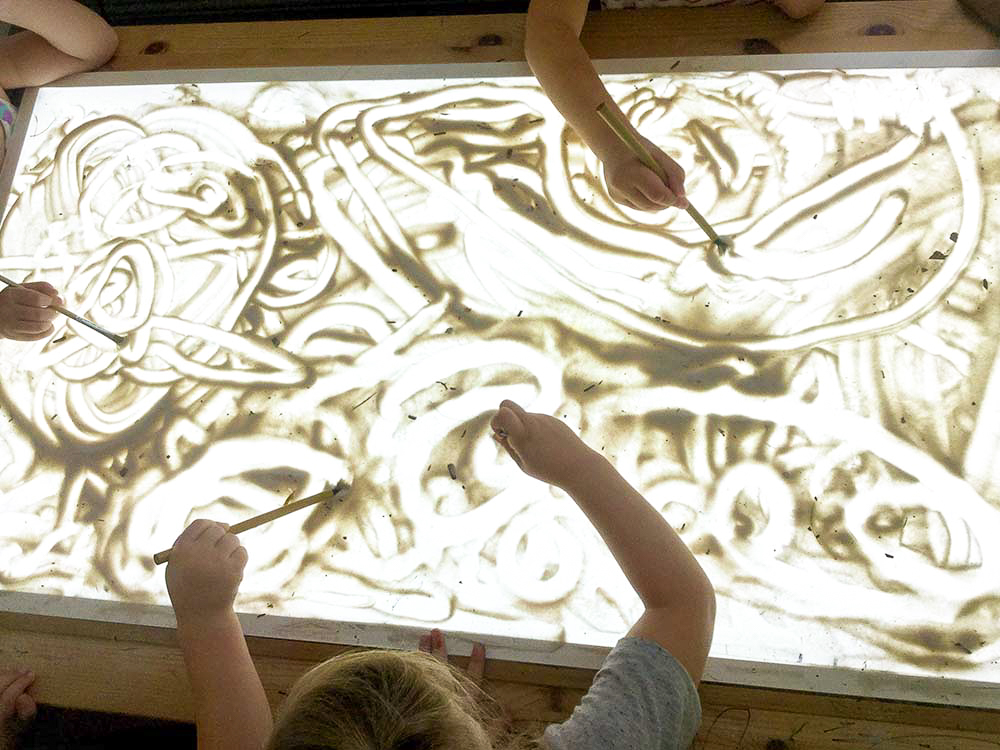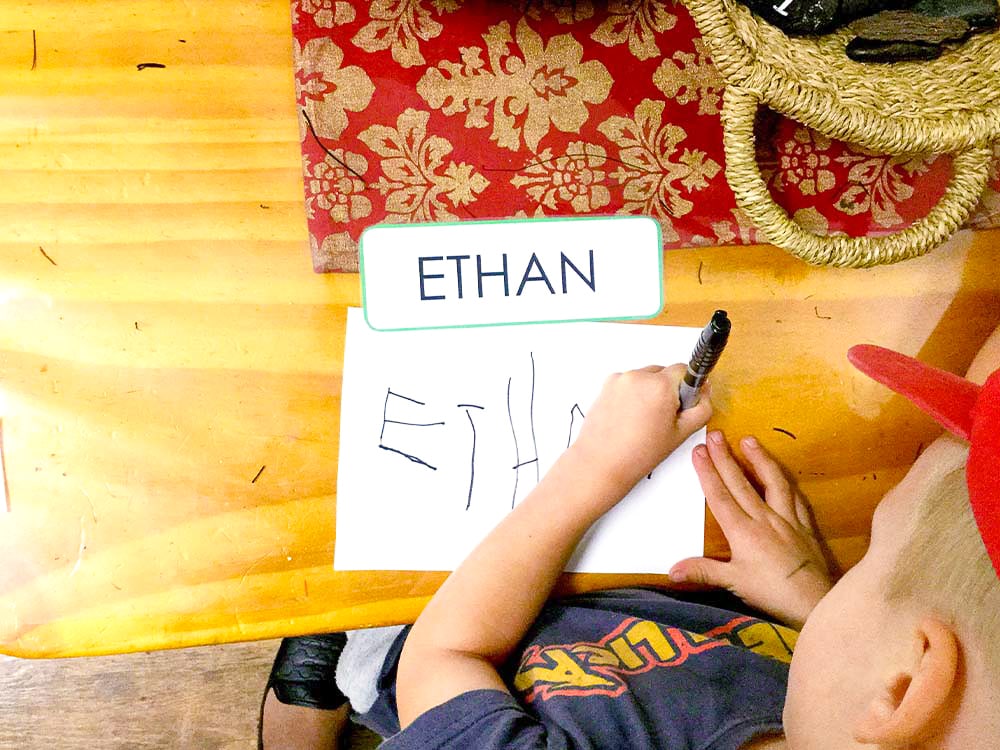Today on the SOEL blog, we wanted to break down the differences between Reggio Emilia vs Montessori vs Steiner. These are approaches to education that differ from traditional schooling that’s familiar to most people. So, what is the difference between Reggio Emilia Approach vs Montessori vs Steiner? Read on to find out!
What is the Reggio Emilia Approach?
The Reggio Emilia Approach is an educational philosophy that started in Reggio Emilia, a city in northern Italy in the Emilia-Romagna region. The Reggio Emilia Approach centres around children being capable, curious and active learners.
Educators plan in-depth research inquiries that are ‘projected’ from children’s curiosity in the world. Consequently, projects can last anywhere from a week to a whole year. Educators are the children’s research partners, creating ways to imagine, explore, experiment and reach conclusions. Children explore and understand concepts through drama, music, art, puppetry, dance, reading, writing, viewing, counting, measuring and ‘The Hundred Languages’.
‘No way. The Hundred is There’ is a poem written by Loris Malaguzzi, a key figure, that manifests the Reggio Emilia Approach. Moreover, the poem depicts the idea of ‘child’ being at the centre of this educational approach. A child equipped naturally with one hundred languages.
The environment also becomes ‘the third teacher’. ‘The third teacher’ is due to educators setting environments in ways that allow for discovery and exploration. Additionally, outdoor spaces are valued just as much as indoor spaces, and easy access to them is essential.
To see the learning process, educators document the children’s learning journey. Accordingly, the documentation uses photographs, work samples, references to other people’s work and reflections of children and educators. Through documentation, learning is made visible to children and adults.



Reggio Emilia Approach to Child Care
There is no standardised accredited system for the Reggio Approach. In fact, it is an educational approach and adaptable philosophy. Therefore, when looking for ‘Reggio-inspired’ centres, you need to consider the Reggio values. Firstly, which values are essential to you, and secondly, what do you want in a childcare centre? The Reggio Emilia Australia Information Exchange writes a fantastic article about questions to ask when considering a ‘Reggio-inspired’ school. Additionally, we have a blog post about how to choose a child care that’s right for you.
Reggio Emilia Approach Summary
- Child-centred learning
- Educators are there to research with the children, not direct
- Utilises many forms of learning (art, drama, music)
- Environment as ‘the third teacher’
- Visible documentation

Montessori vs Reggio Emilia vs Steiner
What is Montessori education?
Dr Maria Montessori was a physician, anthropologist, and pedagogue. She first started her career as a doctor. However, through working with underprivileged children, Dr Montessori switched from medicine to education.
When working with “unteachable” children with disabilities, Dr Montessori centred her teaching around the idea of “First, the education of the senses, then, the education of the intellect.” Ultimately, she developed an educational method that she implemented successfully throughout her professional career. The Montessori Method is based on scientific observations of children’s conceptual development.
What makes the Montessori Method different?
The Montessori Method is an educational practice that works at an individual level in a multi-age setting. Additionally, a Montessori environment is ‘prepared’ with specialised, educational materials. These educational materials target the children’s needs and interests at different stages of development.
Teachers introduce ‘lessons’ to individual children, which show them how to use the materials. Children can then access the materials independently, learning through repetition and practice to complete the work cycle.
For example, the children decide what task to do, find the materials needed, move them to an appropriate workstation. Subsequently, they then do the task, show a teacher that they have completed it and put the materials away again. As the children progress at their own pace, teachers introduce lessons that increase in complexity.
Montessori Australia has a great article on the Montessori Method and their programmes.



Montessori Method Summary
“The satisfaction which they find in their work has given them a grace and ease like that which comes from music.”
– Dr Maria Montessori, The Discovery of the Child
Steiner vs Reggio Emilia vs Montessori
What is Steiner Education?
A Steiner Education, or Waldorf Education, is a form of schooling created by Rudolf Steiner. Rudolf Steiner (1861 to 1925) was an Austrian academic, philosopher and social reformer. Steiner Education aims at giving children a holistic learning programme. As a result, Steiner Schools are grounded in working artistically, spiritually, practically, and intellectually.



In the early learning years, Steiner Education focuses on encouraging creative, self-directed play. Additionally, the outdoors holds great importance as a place for young children to play and connect with. Similarly, Steiner Education values an ‘unplugged’ experience for young children. This ‘unplugged’ experience allows the children to learn to communicate and learn deeply without complex technology.
In short, Steiner Education focuses on learning from experience and observation through making, doing, creating and producing. Steiner Education Australia has written more about the core principles for Australian Steiner Schools.
Steiner Education Summary
- Well-rounded education, including artistically and spiritually
- Educators are there to guide
- Children taught through participation
- ‘Unplugged’ early years learning experience
- Emphasis on outdoor education
Reggio Emilia vs Montessori vs Steiner | Summary
| Reggio Emilia Approach | Montessori Method | Steiner Education | |
|---|---|---|---|
| Role of Educator | Co-research during collaborative inquiries | Teach ‘lessons’ to individual children as they are ‘ready’ | Guide children’s learning |
| Environment | Environment as ‘third teacher’ | Environment encourages children to be independent | Environment promotes children’s sensory learning |
| Learning Journey | Long-term research projects that are negotiated between educators, children and families | Montessori materials are introduced in a planned sequence and undertaken by children independently | Learning in a holistic learning environment from experience and observation |
| Child-centred | Educators plan experiences, and learning environments that will support the planned experiences, based on observations of the children | Educators introduce work tasks based on observations of the children | Educators create learning environments and experiences based on observations of the children |
| Miscellaneous | Documentation makes learning visible to educators, children and families | Mixed-age groups | ‘Unplugged’ early years learning experience |
At Schools of Early Learning, our expert team has spent over 50 years researching the effects of various pedagogy on early childhood development. Based on our findings, we believe children are best served by drawing perspective and insight from many different disciplines, philosophers, and pedagogy, from Australia and overseas. We believe it is the responsibility of early childhood education professionals to stay abreast of new research, seek out diverse perspectives and continually reflect on and refine our practice to best support the development and well-being of children.
SOEL’s philosophy and practice is thus informed by the Reggio Emilia Approach, research into children’s rights and advocacy, anti-bias approach, attachment theory – Circle of Security and Phoenix cups, other best practice which we engage with, as well as our own observations and interactions.

